deleted user
Unregistered
Thanks:
Given thank(s) in post(s)
Sadly don't have the PNG files and the LUT handy right now, but I still had JPEGs and made a proof of concept:
http://www.framecompare.com/image-compar...n/J9FJMNNU
You'll have to do your own collage anyway, mine didn't have enough highlights and thus has the infamous DrDre-highlights problem, haha.
Here are the images in that comparison:
1. UHD
2. UHD, but with colors fixed with Photoshop UHD HDR profile, with Exposure adjustment layer (-0,46 exposure), converted back to sRGB
3. previous one regraded with DrDre to iTunes
4. DrDre regrade, but additionally I applied a gaussian regrade (see the thread I made a few days ago) with 2pixel radius (this whole collage is 50% sized).
5. iTunes
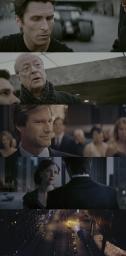
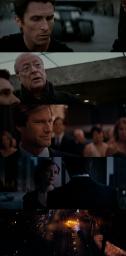
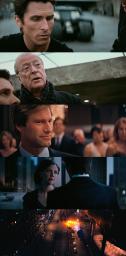
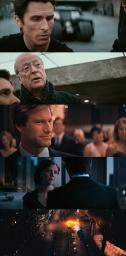
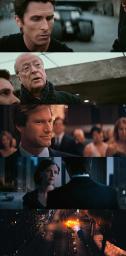
As you can see, DrDre is already very close. With the Gaussian Regrade on top, it's practically indistinguishable from the iTunes
EXCEPT for those pesky little red lights. See those? Those are the reason I gave up on the project a long while back. The Gaussian regrade fixes some of the highlights, like in the big fire with the bus, but those little point lights just aren't as they should be. I know it's a very minor almost OCD-like complaint, but I love those bright red point lights on the iTunes and if I can't get those, I'm not doing it!!!! haha
I believe it has to be some kind of tonemapping, in particular one that regrades based on frequency content. In other words, there are some tone mapping algorithms that basically take the low frequency content (imagine the image blurred), and apply the tonemapping to that, and then put the high frequencies (fine detail) back in. That way it keeps the detail and saturation in the highlights instead of just compressing them completely.
However I never had the motivation to try and find such a tone mapping algorithm that would help replicate those brilliant little red lights.
deleted user
Unregistered
Thanks:
Given thank(s) in post(s)
Oh yeah there are some issues in the screenshots I posted. Dunno why, but Photoshop has recently been exporting PNGs with indexed colors (255 colors) for some reason.
That's why the for example the helicopter color is a bit different and also the car behind bruce in the top picture. In Photoshop they look 100% identical. Only difference I can see in PS is the shape of the red highlights.
Just feeling too lazy rendering them out again because I forgot before haha.
deleted user
Unregistered
Thanks:
Given thank(s) in post(s)
OH LAWD!!!! I'm so stupid. I just answered my own question.
Here, PDB, I have the perfect answer for you. You don't even need DrDre.
Gaussian Regrade, iTunes (this time with proper colors, saved as JPG from Photoshop):

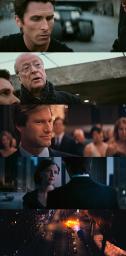 http://www.framecompare.com/image-compar...n/J9FJCNNU
http://www.framecompare.com/image-compar...n/J9FJCNNU
Do these 2 steps:
1. Convert UHD colors to normal colors via ICC profile (UHD HDR PQ Rec2020 profile). Just set your source video to that, I think that should do.
2. Apply Gaussian regrade with 4px radius. (I used 2 because my test file is 50% size).
It was right in front of my face. The Gaussian Regrade essentially does exactly what I said above. It regrades (tonemaps) the low frequency content, but keeps the original details. So now in fact I have perky little red highlights that look even better than in the iTunes. And everything else looks indistinguishable - try to prove me wrong haha! Finally my soul can rest.
And for the scenes where there is no proper overlap, you can just use DrDre with the method I described, it will be close enough.
Edit: I think you could blend both methods to get closer to the iTunes look by getting back a little bit of that glow while still keeping a bit of the perkiness in the highlights. Depending on your taste.
Edit 2: I think another way to get closer without using DrDre would be to apply a curve to the image pre-Gaussian regrade to compress the highlights and fine tune that to your taste.
Posts: 7,151
Threads: 601
Joined: 2015 Jan
Thanks: 1081
Given 1491 thank(s) in 969 post(s)
Country: 
@ PDB: why don't you "slap" open matte HD on top of 1.33:1? AutoOverlay allows to do that only for luma, so you will get better resolution (for central "slice") with no need to regrade.
Posts: 5,133
Threads: 181
Joined: 2015 Jan
Thanks: 3475
Given 3206 thank(s) in 1358 post(s)
Country: 
Thanks for all the demos Tom, I'll give it a look.
(2019-09-05, 07:04 PM)spoRv Wrote: @PDB: why don't you "slap" open matte HD on top of 1.33:1? AutoOverlay allows to do that only for luma, so you will get better resolution (for central "slice") with no need to regrade.
Are we talking putting the 16:9 HD over the 1.33 parts that are upscaled SD (aka the non-HD 1.33 parts)? I'm thinking that would stick out like a sore thumb. I'm not against it but I rather consistency of image.
deleted user
Unregistered
Thanks:
Given thank(s) in post(s)
@ PDB I've an AI upscaling algorithm here recommended to me by someone, think I might have mentioned it a few times. It's like Gigapixel, except even better, because you can train it on any dataset of your own.
If I had the IMAX scenes that are available in HD in both HD and SD, I could set the algorithm up to train with those, and then have it apply to the ones that aren't available in HD. If you happen to have them, ideally without recompression (because that would affect the training algorithm), I'd be happy to give it a go.
It's a rather slow process (can take many days to train), but I've seen some impressive results. It can even sometimes get rid of compression artifacts, ringing, etc., to match the reference, all based on the training data. I think this would be worth a try because I have to admit, the upscaled SD scenes did bother me a bit when watching your old project. You did the best you could of course, but I think with this new AI stuff it might be possible to get even better results.
Posts: 7,151
Threads: 601
Joined: 2015 Jan
Thanks: 1081
Given 1491 thank(s) in 969 post(s)
Country: 
(2019-09-05, 10:31 PM)PDB Wrote: Are we talking putting the 16:9 HD over the 1.33 parts that are upscaled SD (aka the non-HD 1.33 parts)? I'm thinking that would stick out like a sore thumb. I'm not against it but I rather consistency.
Yes; the difference all depends by the sources, but I noted that, even if it sometimes it could be noticed somehow (in particular by an expert), the average Joe usually never notice it - I guess because eyes usually stare in the center part of the image (where the HD will be put in) and "disregarding" the lower resolution of peripheral parts of the image... again, if the difference is not much, but of course YMMV! 
Using some AI should improve SD upscale quality, but I wonder if it could interefere with the AutoOverlay process, though!
Tests are welcome, anyway! 
deleted user
Unregistered
Thanks:
Given thank(s) in post(s)
I don't think it would interfere, but who knows. But even so, if it works out well, it might just be good enough to just use the upscale without overlay.
Again, I'm happy to test the upscale if someone can get me the original HD and SD IMAX shots, ideally arranged somehow so I don't have to search through the entire movie to find them. Setting up the training is enough work as-is. 
Posts: 7,151
Threads: 601
Joined: 2015 Jan
Thanks: 1081
Given 1491 thank(s) in 969 post(s)
Country: 
(2019-09-05, 11:27 PM)TomArrow Wrote: I don't think it would interfere, but who knows. But even so, if it works out well, it might just be good enough to just use the upscale without overlay.
I think it could interfere; but, even if that upscale could work well, original HD source would be always better.
deleted user
Unregistered
Thanks:
Given thank(s) in post(s)
|















